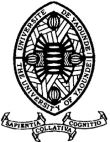Radio-Histological Correlation of ACR4 and ACR5 Breast Lesions in Conakry: A Comparative Multicenter Study
Corrélation Radio-Histologique des Lésions Mammaires ACR4 et ACR5 à Conakry: Une Étude Comparative Multicentrique
DOI:
https://doi.org/10.5281/hra.v3i4.6475Keywords:
Correlation, radiology, histology, Breast, ACR4, ACR5, Conakry.Abstract
RÉSUMÉ
Introduction. Le cancer du sein constitue un enjeu majeur de santé publique, mettant en danger la vie de millions de femmes à travers le monde. Les lésions mammaires classées ACR4 et ACR5 selon le système BIRADS présentent un risque élevé de malignité et nécessitent une confirmation histologique. Cette étude visait à évaluer la corrélation entre les résultats radiologiques et histologiques des lésions classées ACR4 et ACR5. Patients et méthodes. Nous avons mené une étude prospective du 1er janvier au 30 juin 2018 dans plusieurs centres de Conakry, incluant le centre de radiologie de la Caisse Nationale de Sécurité Sociale, l’hôpital Sino-Guinéen et l’hôpital Donka. Les patients des deux sexes présentant des lésions mammaires classées ACR4 ou ACR5 et ayant bénéficié d’une biopsie ont été inclus. Les données radiologiques (mammographie et échographie) ont été comparées aux résultats histologiques. Les analyses statistiques ont été réalisées avec les logiciels Epi Info et SPSS. Résultats. Sur 532 patients inclus, 81,95 % ont subi une mammographie et une échographie. Parmi eux, 11,8 % présentaient des lésions ACR4 et 8,5 % des lésions ACR5. La biopsie a confirmé une malignité dans 46,2 % des cas, avec une prédominance de carcinome canalaire non spécifique (48,8 %). La valeur prédictive positive de malignité était de 85 % pour les lésions ACR5 et de 51,1 % pour les lésions ACR4. Conclusion. Cette étude confirme l’utilité de l’association mammographie-échographie pour l’évaluation des lésions ACR4 et ACR5, suivie d’une biopsie pour confirmation histologique. Elle souligne également l’importance du dépistage précoce, en particulier chez les femmes d’âge moyen avancé, afin d’améliorer la prise en charge du cancer du sein.
ABSTRACT
Introduction. Breast cancer represents a major public health challenge, endangering the lives of millions of women worldwide. Breast lesions classified as ACR4 and ACR5 under the BIRADS system carry a high risk of malignancy and require histological confirmation. This study aimed to establish the correlation between radiological and histological findings in ACR4 and ACR5 lesions. Patients and Methods. We conducted a prospective study from January 1 to June 30, 2018, across several centers in Conakry, including the Radiology Center of the National Social Security Fund, the Sino-Guinean Hospital, and Donka Hospital. Patients of both sexes with breast lesions classified as ACR4 or ACR5 who underwent biopsy were included. Radiological findings (mammography and ultrasound) were compared with histological results. Statistical analyses were performed using Epi Info and SPSS software. Results. Out of 532 included patients, 81.95% underwent both mammography and ultrasound. Among them, 11.8% had ACR4 lesions and 8.5% had ACR5 lesions. Biopsy confirmed malignancy in 46.2% of cases, with a predominance of non-specific ductal carcinoma (48.8%). The positive predictive value for malignancy was 85% for ACR5 lesions and 51.1% for ACR4 lesions. Conclusion. This study confirms the utility of combining mammography and ultrasound for evaluating ACR4 and ACR5 lesions, followed by biopsy for histological confirmation. It also highlights the importance of early screening, particularly among middle-aged and older women, to improve breast cancer management.
References
1. American College of Radiology. Breast Imaging Reporting and Data System (BI-RADS). 5th ed. Reston, VA: American College of Radiology; 2013.
2. Costantini M, Belli P, Lombardi R, Franceschini G, Mulè A, Bonomo L. Prevalence of breast lesions detected by ultrasound in women with mammographically negative dense breasts. Eur Radiol. 2001;11(8):1500-8.
3. Orel SG, Kay N, Reynolds C, Sullivan DC. Biopsy of the breast: when to use it and how to get the best results. Radiol Clin North Am. 1994;32(5):1093-110.
4. Liberman L. Clinical management issues in percutaneous core breast biopsy. Radiol Clin North Am. 2000;38(4):791-807.
5. Berg WA, Blume JD, Cormack JB, Mendelson EB, Lehrer D, Böhm-Vélez M, et al. Combined screening with ultrasound and mammography vs mammography alone in women at elevated risk of breast cancer. JAMA. 2008;299(18):2151-63.
6. Li CI, Malone KE, Daling JR. Differences in breast cancer stage, treatment, and survival by race and ethnicity. Arch Intern Med. 2005;165(18):2129-36.
7. Anderson WF, Camargo MC, Fraumeni JF Jr, Correa P, Rosenberg PS, Rabkin CS. Age-specific trends in incidence of noncardia gastric cancer in US adults. JAMA. 2006;296(16):2026-34.
8. Skaane P, Bandos AI, Gullien R, Eben EB, Ekseth U, Haakenaasen U, et al. Comparison of digital mammography alone and digital mammography plus tomosynthesis in a population-based screening program. Radiology. 2007;244(3):708-17.
9. Lehman CD, Blume JD, Weatherall P, Thickman D, Hylton N, Warner E, et al. Screening women at high risk for breast cancer with mammography and magnetic resonance imaging. Cancer. 2005;103(9):1898-905.
10. Nothacker M, Duda V, Hahn M, Warm M, Degenhardt F, Madjar H, et al. Early detection of breast cancer: benefits and risks of supplemental breast ultrasound in asymptomatic women with mammographically dense breast tissue. A systematic review. BMC Cancer. 2009;9:335.
11. Berg WA, Zhang Z, Lehrer D, Jong RA, Pisano ED, Barr RG, et al. Detection of breast cancer with addition of annual screening ultrasound or a single screening MRI to mammography in women with elevated breast cancer risk. JAMA. 2012;307(13):1394-404.
Downloads
Published
How to Cite
Issue
Section
License
Copyright (c) 2025 Ousmane Koulibaly, aminata kante, Mariame ciré Dramé, Assiatou Barry, Makessa Camara, Ahmed Mazomba Keita

This work is licensed under a Creative Commons Attribution-NonCommercial-NoDerivatives 4.0 International License.
Authors who publish with this journal agree to the following terms:
- Authors retain copyright and grant the journal right of first publication with the work simultaneously licensed under a Creative Commons Attribution License CC BY-NC-ND 4.0 that allows others to share the work with an acknowledgement of the work's authorship and initial publication in this journal.
- Authors are able to enter into separate, additional contractual arrangements for the non-exclusive distribution of the journal's published version of the work (e.g., post it to an institutional repository or publish it in a book), with an acknowledgement of its initial publication in this journal.
- Authors are permitted and encouraged to post their work online (e.g., in institutional repositories or on their website) prior to and during the submission process, as it can lead to productive exchanges, as well as earlier and greater citation of published work










